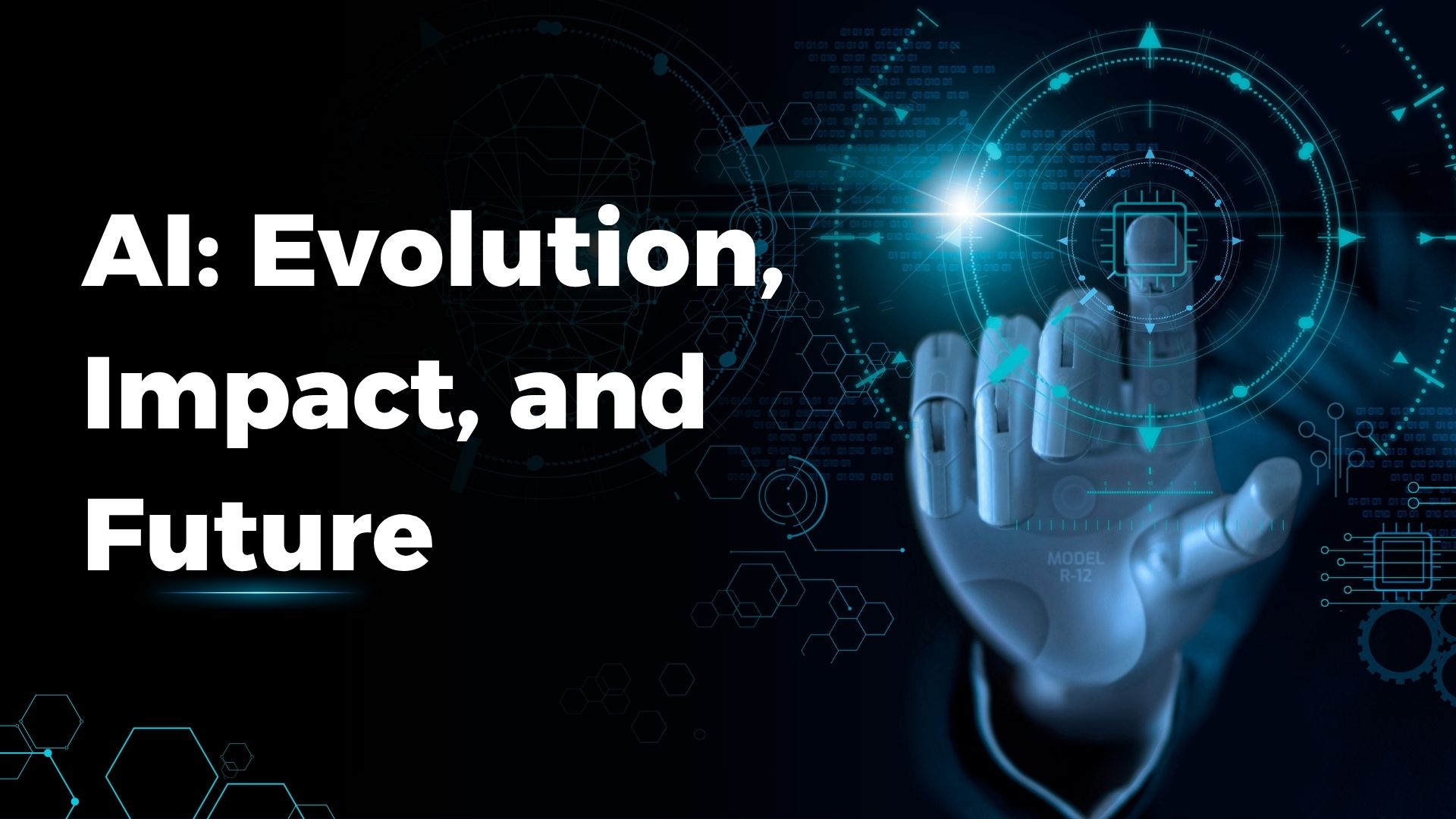AI: Evolution, Impact, and Future

Introduction
Artificial Intelligence (AI) has emerged as one of the most transformative technologies of the 21st century, reshaping industries, economies, and societies. From its conceptual origins in the mid-20th century to its current role in powering everything from virtual assistants to autonomous vehicles, AI has evolved into a cornerstone of modern innovation. This article provides a comprehensive overview of AI, exploring its history, core concepts, applications, ethical considerations, and future potential, aiming to demystify this complex field for a broad audience.
The Genesis of Artificial Intelligence
The concept of AI dates back to the 1950s, when British mathematician Alan Turing posed the question, "Can machines think?" In his seminal work, Turing proposed the idea of a machine capable of mimicking human intelligence, laying the groundwork for modern AI. The term "Artificial Intelligence" was coined in 1956 during the Dartmouth Conference, organized by computer scientist John McCarthy. This event marked the formal birth of AI as a field of study, with researchers envisioning machines that could learn, reason, and solve problems autonomously.
Early AI research focused on symbolic AI, where systems used predefined rules and logic to mimic human reasoning. Programs like the Logic Theorist, developed in 1955 by Herbert Simon and Allen Newell, demonstrated the potential of machines to solve mathematical theorems. However, the limitations of computational power and data availability constrained progress, leading to periods of reduced funding known as "AI winters."
The resurgence of AI in the late 20th and early 21st centuries was driven by advancements in computing power, the availability of vast datasets, and breakthroughs in machine learning algorithms. The introduction of neural networks, inspired by the human brain, and the development of deep learning techniques revolutionized the field, enabling AI systems to process complex data and achieve unprecedented accuracy in tasks like image recognition and natural language processing.
Core Concepts of AI
AI encompasses a range of technologies and methodologies designed to enable machines to perform tasks that typically require human intelligence. The field can be broadly categorized into three types:
Narrow AI: Also known as weak AI, narrow AI is designed to perform specific tasks with high efficiency. Examples include virtual assistants like Siri and Alexa, recommendation algorithms on streaming platforms, and facial recognition systems. Narrow AI excels in well-defined domains but lacks general cognitive abilities.
General AI: General AI, or strong AI, refers to systems capable of performing any intellectual task a human can do. This includes reasoning, problem-solving, and adapting to new situations without specific programming. General AI remains a theoretical goal, with current systems far from achieving this level of versatility.
Super intelligent AI: A hypothetical future stage, super intelligent AI would surpass human intelligence across all domains. This concept raises significant ethical and existential questions, as such systems could potentially outthink humans in unpredictable ways.
Key AI Technologies
Machine Learning (ML): A subset of AI, ML involves algorithms that enable systems to learn from data and improve over time without explicit programming. Supervised learning, unsupervised learning, and reinforcement learning are the primary paradigms of ML.
Deep Learning: A specialized form of ML, deep learning uses neural networks with multiple layers to process complex patterns in data. It powers applications like speech recognition and autonomous driving.
Natural Language Processing (NLP): NLP enables machines to understand and generate human language, facilitating applications like chatbots, translation tools, and sentiment analysis.
Computer Vision: This field allows machines to interpret visual data, enabling applications like object detection, facial recognition, and medical image analysis.
Robotics: AI-driven robotics combines perception, decision-making, and physical interaction to automate tasks in industries like manufacturing and healthcare.
Applications of AI Across Industries
AI’s versatility has led to its adoption across diverse sectors, transforming how businesses operate and how individuals interact with technology.
Healthcare
AI is revolutionizing healthcare by enhancing diagnostics, treatment planning, and patient care. Machine learning models analyze medical images to detect conditions like cancer with greater accuracy than human experts. AI-powered tools like IBM Watson assist doctors in identifying treatment options, while predictive analytics help hospitals manage resources and anticipate patient needs. Wearable devices and AI-driven health apps also empower individuals to monitor their health in real-time.
Finance
In the financial sector, AI drives fraud detection, risk assessment, and algorithmic trading. Machine learning models analyze transaction patterns to identify suspicious activities, while chatbots provide personalized customer service. AI also enables robo-advisors, which offer automated financial planning based on user preferences and market trends.
Transportation
Autonomous vehicles, powered by AI, promise to redefine transportation. Companies like Tesla and Waymo use deep learning and computer vision to enable self-driving cars to navigate complex environments. AI also optimizes logistics and supply chain management, reducing costs and improving efficiency.
Retail and E-commerce
AI enhances the retail experience through personalized recommendations, dynamic pricing, and inventory management. E-commerce platforms like Amazon use AI to analyze user behavior and suggest products, while chatbots handle customer inquiries, improving satisfaction and reducing operational costs.
Education
In education, AI personalizes learning experiences through adaptive platforms that tailor content to individual student needs. Tools like AI tutors and automated grading systems streamline educational processes, while virtual reality powered by AI offers immersive learning environments.
Entertainment
The entertainment industry leverages AI for content creation, recommendation systems, and audience analysis. Streaming platforms like Netflix and Spotify use AI to curate personalized playlists and movie suggestions, while AI-generated art and music push creative boundaries.
Ethical Considerations and Challenges
As AI becomes more pervasive, it raises critical ethical and societal questions. Key challenges include:
Bias and Fairness: AI systems can inherit biases from training data, leading to unfair outcomes in areas like hiring, lending, and criminal justice. Addressing bias requires diverse datasets and transparent algorithms.
Privacy: AI’s reliance on vast datasets raises concerns about data security and user privacy. Regulations like GDPR aim to protect individuals, but balancing innovation and privacy remains a challenge.
Job Displacement: Automation driven by AI threatens to disrupt labor markets, particularly in industries like manufacturing and customer service. Reskilling and upskilling programs are essential to mitigate these impacts.
Accountability: As AI systems make decisions in critical areas like healthcare and criminal justice, determining accountability for errors becomes complex. Transparent decision-making processes are crucial to build trust.
Existential Risks: The prospect of super intelligent AI has sparked debates about its potential to pose existential threats to humanity. Researchers advocate for robust safety measures and international cooperation to manage these risks.
The Future of AI
The future of AI is both exciting and uncertain, with ongoing advancements poised to reshape society further. Key trends include:
Advancements in General AI: While narrow AI dominates today, research into general AI continues, with potential breakthroughs in cognitive architectures and reasoning capabilities.
AI and Sustainability: AI is being used to address global challenges like climate change, optimizing energy consumption, and supporting conservation efforts through predictive modeling.
Human-AI Collaboration: The focus is shifting toward AI systems that augment human capabilities rather than replace them. Collaborative AI tools are emerging in fields like design, medicine, and scientific research.
Regulation and Governance: Governments and organizations are developing frameworks to regulate AI, balancing innovation with ethical considerations. International collaboration will be critical to establish global standards.
Edge AI: The rise of edge computing enables AI to run on devices like smartphones and IoT systems, reducing latency and enhancing privacy by processing data locally.
Conclusion
Artificial Intelligence stands at the intersection of technology, ethics, and human potential, offering unprecedented opportunities to solve complex problems and enhance lives. From its humble beginnings in the 1950s to its current role as a driver of innovation, AI has come a long way, yet its journey is far from over. As we navigate its opportunities and challenges, a thoughtful approach to development, regulation, and education will be essential to harness AI’s potential for the greater good. By fostering collaboration between technologists, policymakers, and society, we can ensure that AI serves as a force for progress, equity, and sustainability in the years to come.
👉 For smart tips on selecting the right expert for your management assignments, check out the article "Tips to Choose the Best Management Assignment Helper." It’s a must-read for students looking for reliable guidance!




